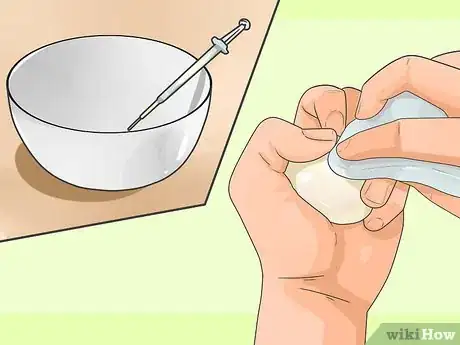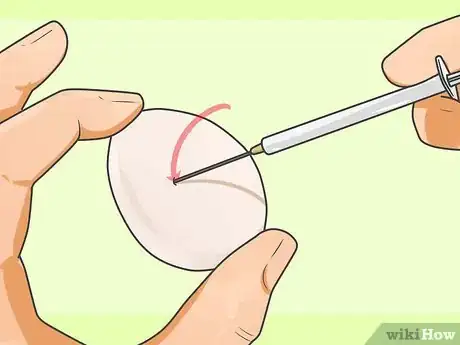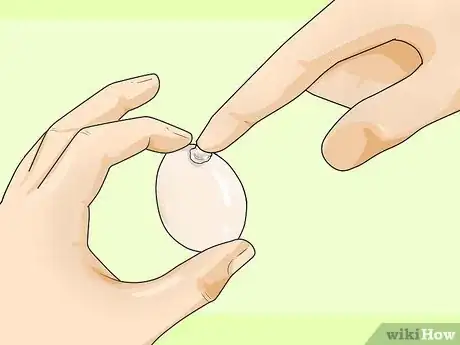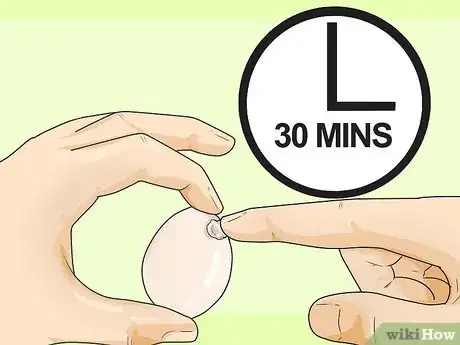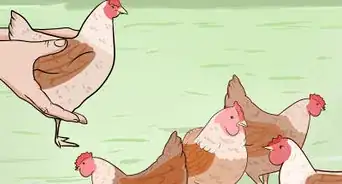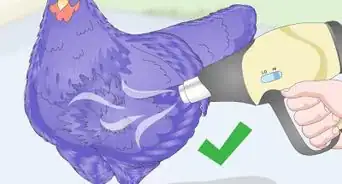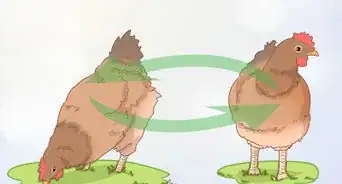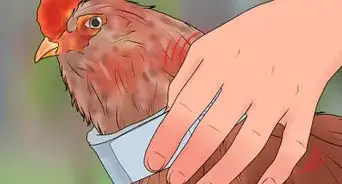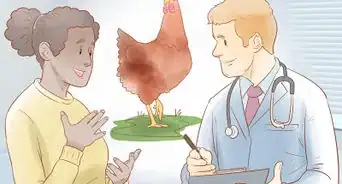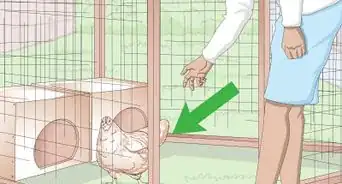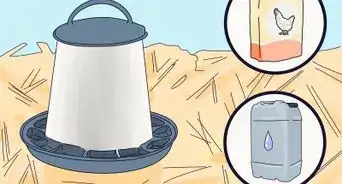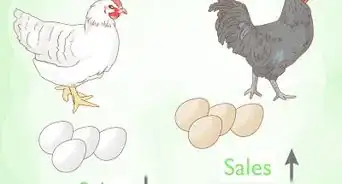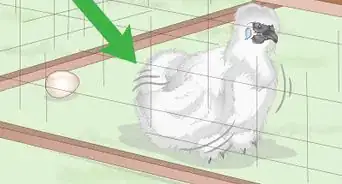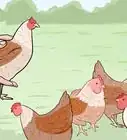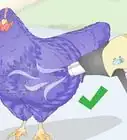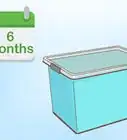wikiHow is a “wiki,” similar to Wikipedia, which means that many of our articles are co-written by multiple authors. To create this article, 25 people, some anonymous, worked to edit and improve it over time.
There are 8 references cited in this article, which can be found at the bottom of the page.
This article has been viewed 153,564 times.
Learn more...
Dyeing chicks is traditionally done to identify chicks from different groups of eggs. It is also done in many wildlife management studies. More commonly today, dyeing chicks is done simply to produce colorful chicks for Easter. Dyeing chicken embryos can harm them and the practice may cause death to the unborn chick if done incorrectly. It's also illegal in some states and is strongly opposed by animal welfare groups.
Steps
Inserting Dye
-
1Use chicks in their 11th to 14th day of incubation. It is possible to inject eggs that have been incubated anywhere from 10 to 19 days, but the 11th to 14th period is ideal. Only one injection is necessary if done at this time.[1]
-
2Sterilize the egg and needle. Sterilize the outside of the egg and the hypodermic needles. You do not want to introduce bacteria to the embryo which may harm it.[2]Advertisement
-
3Puncture the eggshell. With the hypodermic needle, slowly and carefully make a small hole in the shell about one half-inch from the small end of the egg.
- Do not insert the needle too far as this will damage the embryo.
- Use a different needle for each egg to ensure sterility.
-
4Insert the dye. Extract .5 milliliters (0.02 fl oz) of dye from the bottle and insert the tip of the needle into the hole.Slowly and carefully inject the dye into the egg to prevent overflowing.[5]
- Insert the dye just under the shell and membrane.
- Use vegetable food coloring as the dye.
- Use a different needle for each color to keep colors pure.
Caring for the Eggs
-
1Seal the hole. Close the hole in the shell with a small drop of melted paraffin, making sure to cover the entirety of the hole.
- Paraffin can be found at many craft stores.
- You can use an adhesive bandage if no paraffin is available.
-
2Insert dye and seal the hole within 30 minutes. Do not keep the eggs out of the incubator longer than 30 minutes for the safety of the embryos.
- Embryos can be damaged if not kept at a high temperature.[6]
-
3Return the eggs to the incubator. Chicks typically take 21 days to hatch.
- Incubate chicken eggs between 99 and 102 degrees Fahrenheit with 50-65 percent relative humidity.[7]
Community Q&A
-
QuestionWon't the dye harm the chicken?
 Community AnswerIf you use natural, non-toxic dye, then there would be no problem. The dye will come off as the chicken molts its old feathers.
Community AnswerIf you use natural, non-toxic dye, then there would be no problem. The dye will come off as the chicken molts its old feathers. -
QuestionDo I stick the needle just past the shell, or go through the clear layer?
 Amy HarrisonTop AnswererStick it in just after the shell. Don't puncture the embryo sack.
Amy HarrisonTop AnswererStick it in just after the shell. Don't puncture the embryo sack. -
QuestionWill the chick be that color for the rest of its life?
 Amy HarrisonTop AnswererNo, the dye isn't permanent, it wears of in 3 - 4 weeks when they start growing their feathers.
Amy HarrisonTop AnswererNo, the dye isn't permanent, it wears of in 3 - 4 weeks when they start growing their feathers.
Warnings
- Some states such as Massachusetts, Michigan, Ohio, California, Florida and New York have bans on dyeing chicks.⧼thumbs_response⧽
- It is possible to injure or kill the unborn chick during the dyeing process.⧼thumbs_response⧽
- State laws are changing so be sure to check the law in your state.[8]⧼thumbs_response⧽
.
Things You'll Need
- Vegetable food coloring in concentrations of 2 percent or 3 percent
- Alcohol pads of 95 percent isopropyl alcohol
- 20 gauge hypodermic needles
- Paraffin or sterile adhesive bandage
References
- ↑ http://chickscope.beckman.uiuc.edu/resources/egg_to_chick/coloring.html
- ↑ http://www.audubon.org/news/colored-chicks-raise-concerns-after-easter-many-face-fates-worse-dye
- ↑ http://www.cdc.gov/hicpac/disinfection_sterilization/6_0disinfection.html
- ↑ http://medical-dictionary.thefreedictionary.com/gauze
- ↑ http://urbanext.illinois.edu/eggs/res32-qa.html
- ↑ http://extension.missouri.edu/p/G8353
- ↑ http://www.grit.com/animals/incubating-chicken-eggs.aspx
- ↑ http://www.usatoday.com/story/news/nation/2015/03/24/mich-laws-crosshairs-cuss-dye-chicks/70404872/
About This Article
To dye a baby chicken, collect eggs that are on their 11th to 14th day of incubation, and sterilize their shells using alcohol pads with 95 percent isopropyl alcohol. Then, use a clean hypodermic needle to puncture a small hole in the eggshell, about 1 half-inch from the small end of the egg. Make sure not to insert the needle too far, or you could damage the embryo, and do not reuse the same needle on different eggs to ensure sterility. From here, you should inject about .5 milliliters of vegetable food coloring into the egg, just under the shell and membrane, by inserting the tip of the needle into the hole. For more tips, like how to care for your dyed eggs, keep reading!

